Configure Incident.io push logs to Chronicle
What is this document about?
This document provides a comprehensive guide on how to export audit logs from Incident.io and ingest them into Google Chronicle for security monitoring and analysis.
Why is this important?
Shipping incident.io activity logs to Chronicle empowers you to:
- Centralized Security Visibility:
- Consolidate incident.io activity logs within Chronicle to gain a comprehensive view of your incident response activities alongside other security data.
- Enhanced Threat Detection:
- Leverage Chronicle's advanced analytics to identify suspicious patterns or anomalies in incident response workflows, potentially indicating malicious activity or process deviations.
- Improved Incident Investigation:
- Correlate incident.io logs with other security events in Chronicle to accelerate investigations and gain a deeper understanding of the context surrounding security incidents.
- Compliance and Audit Trail:
- Maintain a detailed audit trail of incident response actions within Chronicle, facilitating compliance with regulatory requirements and internal security policies.
This guide is essential for:
- Security operations center (SOC) analysts.
- Incident response teams.
- Security engineers.
- Anyone responsible for monitoring and investigating security incidents.
By following this guide, you can effectively integrate incident.io activity logs with Chronicle, strengthening your organization's security posture and incident response capabilities.
Prerequisites
- Incident.io Admin
- API Keys Admin (
roles/serviceusage.apiKeysAdmin) on your Chronicle Project - Chronicle Admin
Create Chronicle Feed
In Chronicle, navigate to Settings > SIEM Settings > Feeds
Click ADD NEW and then fill out using the below details
- FEED NAME:
Incident.io - SOURCE TYPE:
Webhook - LOG TYPE:
Incident Io
Your page should look like the below:
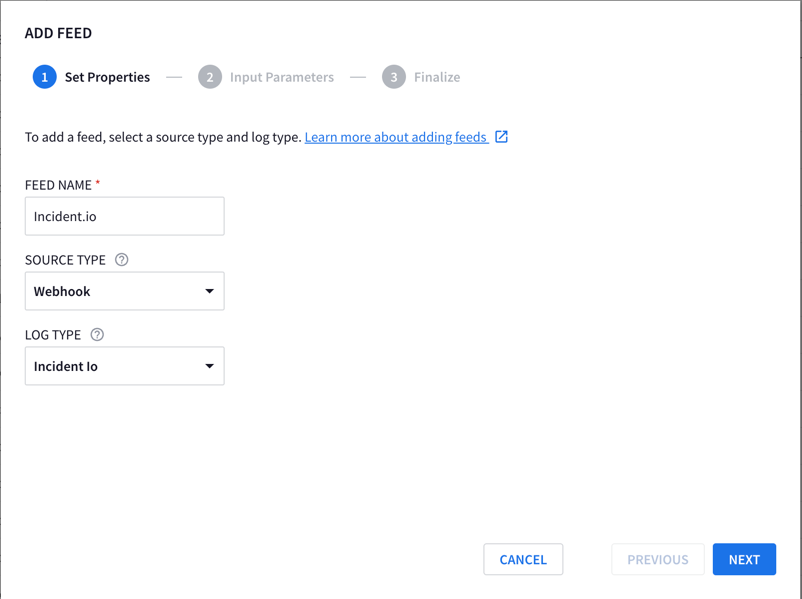
For Input Parameter you can skip this
Click NEXT and then SUBMIT
You will see a new page come up saying Attention: A secret key is needed to complete feed setup. - Do not close this window
it's required in the next step
Click on Details on the window that has just opened up, and copy and paste the Endpoint Information in to a text document
Create Chronicle Credentials
Click on the button that reads Generate Secret Key
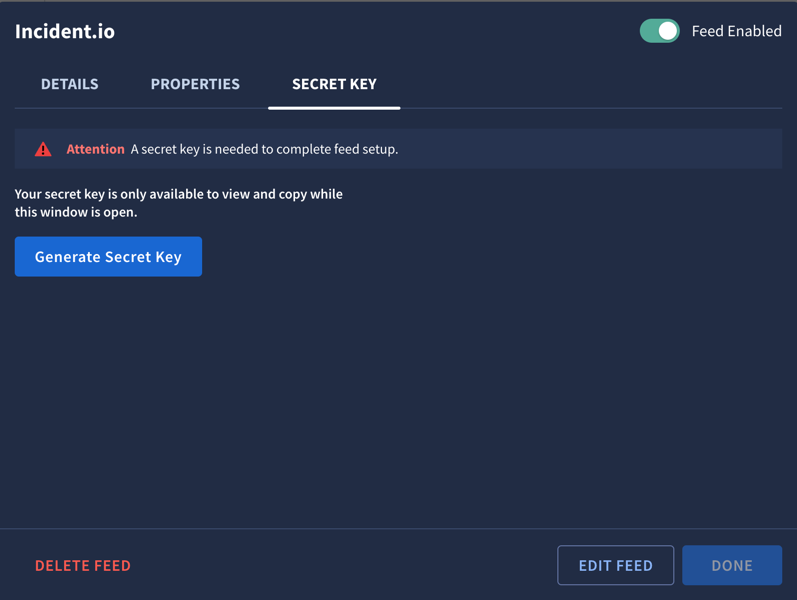
Copy and paste the secret key in to a notepad like
Create GCP Credentials
Navigate to the GCP project you are using to house Chronicle
How to find project that Chronicle is deployed from
Click Settings > SIEM SETTINGS
On the home page it will say GCP Project ID:
In this project, navigate to APIs and services > Credentials
Click + CREATE CREDENTIALS on the top left of the page.
Once a randomly generated credential is made, click the 3 dots on the right hand side and select Edit API key
Set the Name to Incident.io
Under restrictions set the API to be Chronicle
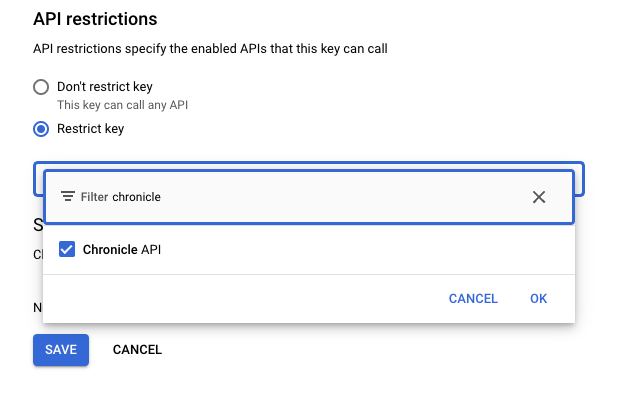
Click OK and then SAVE
Once returned back to the main menu, click SHOW KEY and paste this in to a text document with our other key in the format like below
You should have something that looks like the below:
X-Webhook-Access-Key=b3022395dea87f5dae12d45e2413f747863ec8333e54319faa0d240c53e85c19
X-goog-api-key=yBShXnMzYVOWGujPcA5o5rGPSoWFAaY9bvMF88Q6lRqHWSluHAal
Setup Incident.io
Navigate to Incident.io
Click Settings > Security
Scroll down and click on Configure log streaming

Here you have several options on the destinations, we are going to send them to an HTTP endpoint.
Select Generic HTTPS
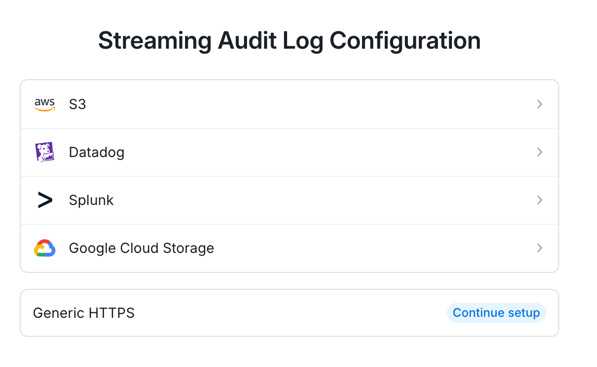
Prepare your URL using the Chronicle URL Creation tool and copy it to your clipboard
In the below, put:
URL: URL from the toolHTTP Header Name:unsetHTTP Header Value:not-used
Set the Request body format to JSON
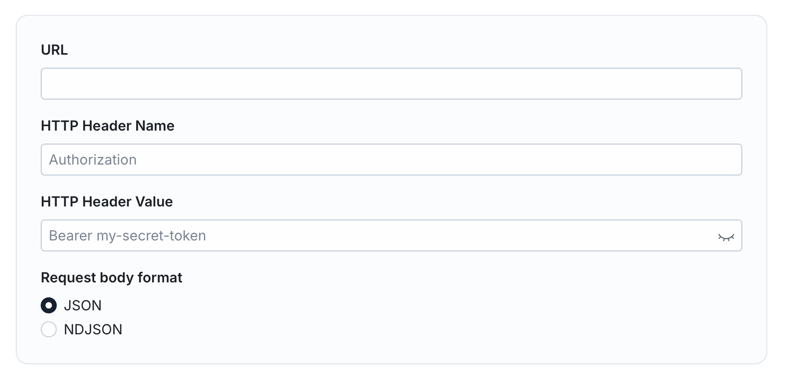
Click Save and then you're done!
Troubleshooting
As I've had no issues whilst setting this up, there is nothing I can add to troubleshoot, so if you come across
an issue, please consider opening an issue on the repo, which can be done by clicking documentation on the top right of
this site
Want to make this site better? Open a PR, help fund hosting costs or message me on Matrix